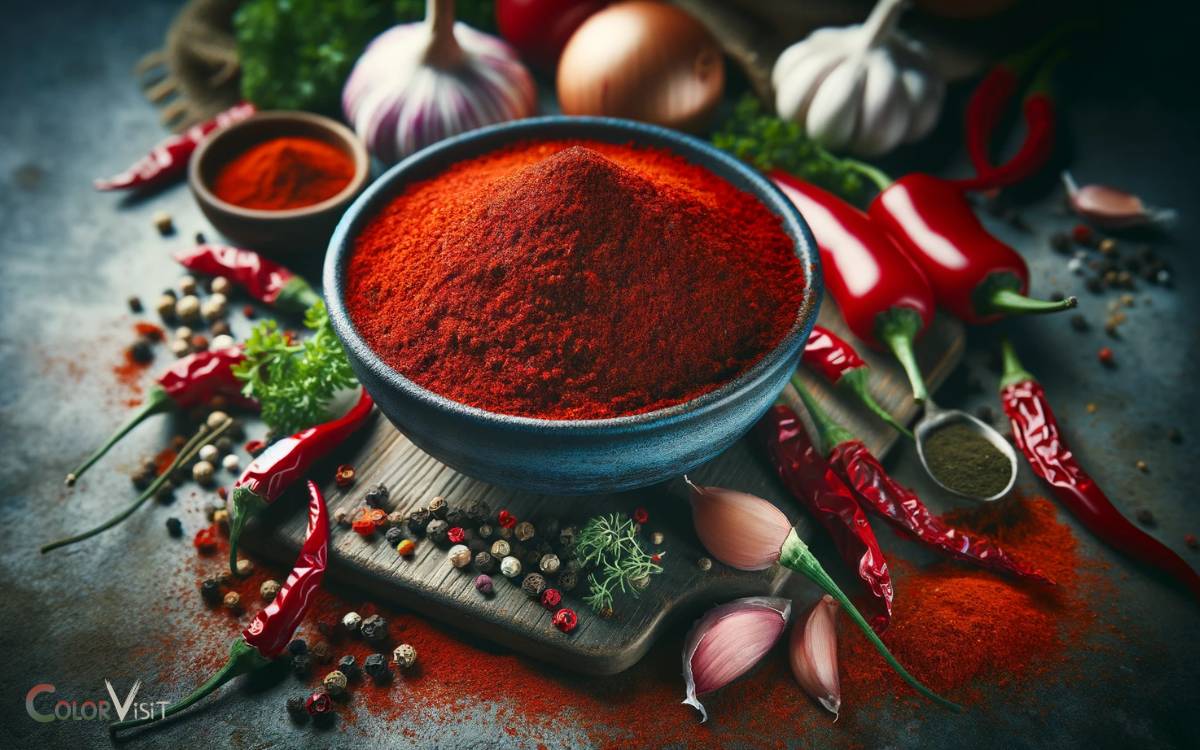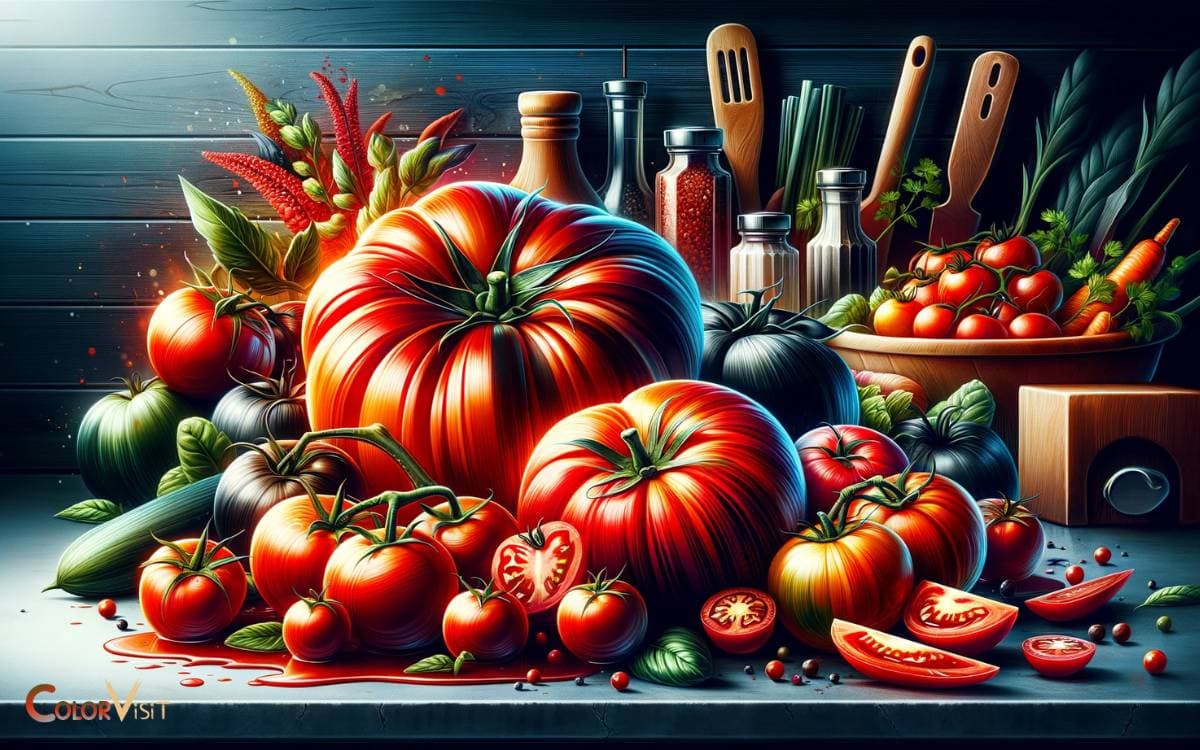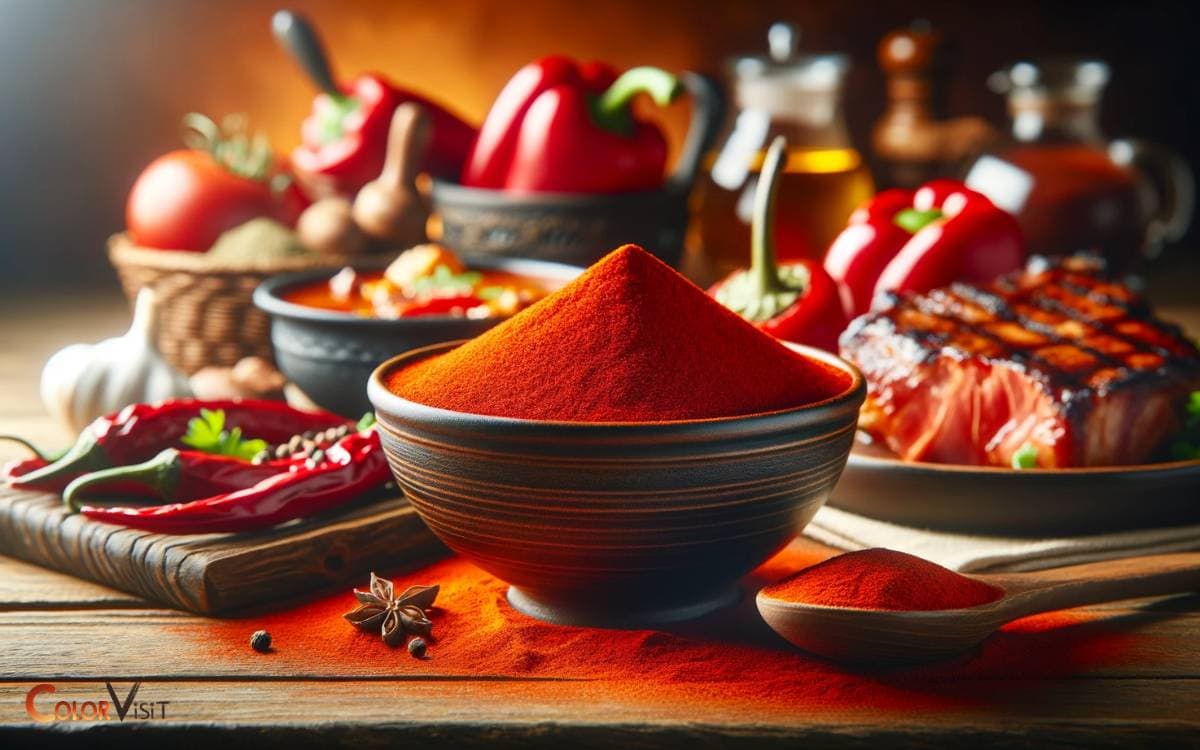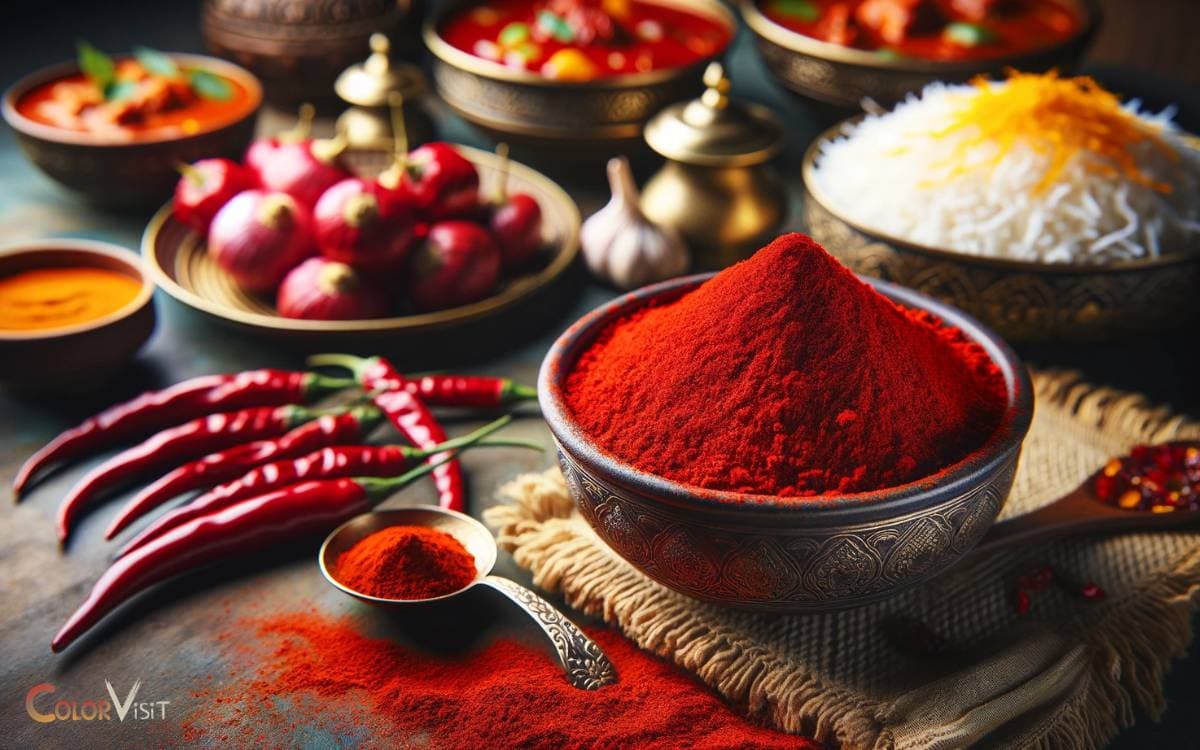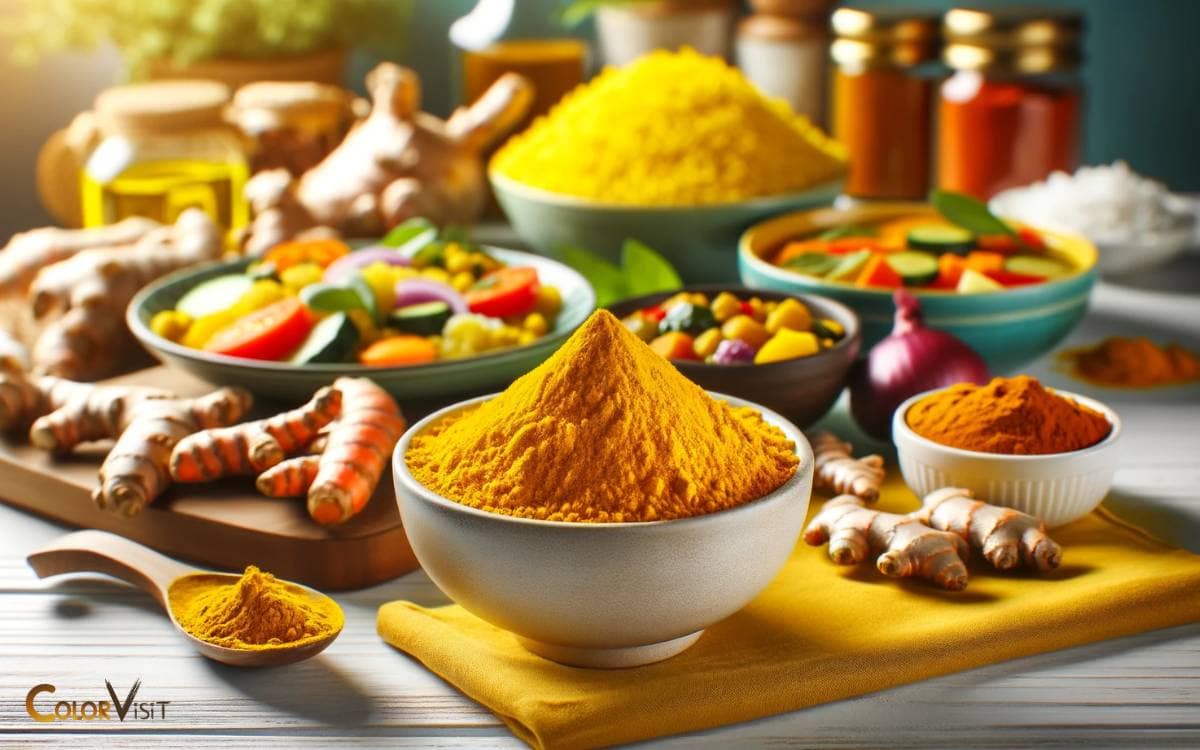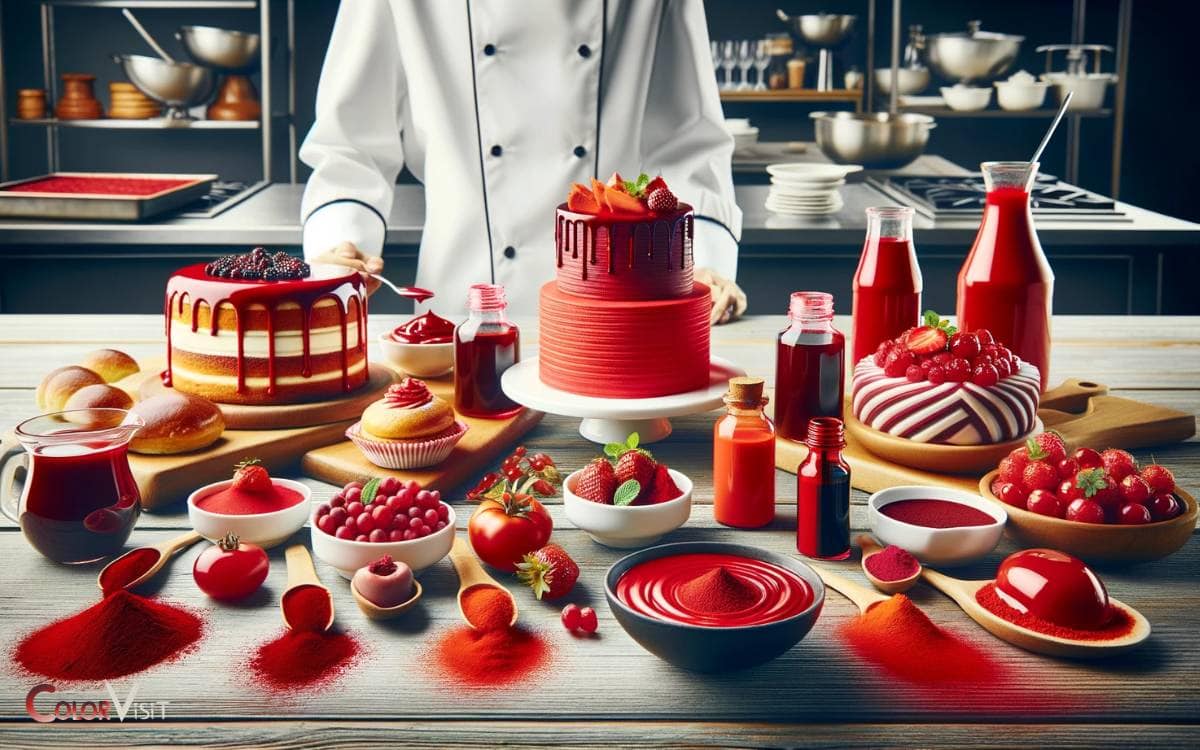How to Get Red Color in Pav Bhaji? 7 Steps!
To achieve the iconic red color in pav bhaji, incorporate ripe red tomatoes, red chili powder, and Kashmiri chili powder into your recipe.
Optionally, you can add beetroot for a deeper red shade or use paprika for a mild smoky flavor with color.
These natural ingredients enhance both the visual appeal and the taste of your pav bhaji without the need for artificial colorants.
The color is an essential aspect of its appeal and can be attained through various natural ingredients:
Enhance your pav bhaji with a natural scarlet hue by embracing fresh red ingredients.
This simple touch not only adds to the visual delight but also infuses the dish with rich, authentic flavors, ensuring your pav bhaji is as pleasing to the eye as it is to the palate.
Key Takeaway
Step 1: Understanding the Importance of Tomatoes
The use of tomatoes in pav bhaji is essential for achieving the vibrant red color and imparting a tangy flavor to the dish.
- Tomatoes contain a high concentration of lycopene, a natural pigment that gives them their characteristic color.
- When cooked, the lycopene in the tomatoes is released, infusing the pav bhaji with a rich red hue.
- Additionally, the acidity of tomatoes provides a tangy and refreshing flavor that balances the richness of the other ingredients.
- To enhance the color and flavor profile, using ripe, juicy tomatoes is crucial. Moreover, the tomatoes help in achieving the desired consistency and texture of the pav bhaji.
Therefore, selecting high-quality, flavorful tomatoes and using them generously is key to creating an appetizing and visually appealing pav bhaji.
Step 2: Choosing Red Chili Powder
To achieve a vibrant red color in Pav Bhaji, the incorporation of red chili powder is crucial. The spicing of the dish plays a significant role in creating the desired hue, with Kashmiri chili powder being a popular choice for its deep red tone.
Balancing the heat and color is essential, ensuring that the dish not only looks appealing but also delivers the right level of spiciness.
Spicing for Vibrant Color
One key step in achieving a vibrant red color in pav bhaji is to incorporate a precise amount of red chili powder during the cooking process. Red chili powder not only adds heat but also intensifies the dish’s color.
- To ensure a vibrant hue, it’s crucial to use a high-quality chili powder known for its rich red color.
- Additionally, consider blooming the chili powder in oil before adding other ingredients to enhance its color and distribute the spice evenly.
- Balancing the amount of chili powder is essential as it affects both the color and the dish’s spiciness.
Careful measurement and gradual incorporation allow for adjustments to achieve the desired vibrant red color without overpowering heat, resulting in visually appealing and flavorful pav bhaji.
Using Kashmiri Chili Powder
Incorporating Kashmiri chili powder, known for its vibrant red color, can further enhance the hue of the pav bhaji while building on the spicing technique discussed earlier.
This unique ingredient not only intensifies the color but also adds a distinct flavor to the dish.
Here’s how to use it effectively:
- Start by adding a small amount and gradually increase to achieve the desired level of spiciness.
- Mix the Kashmiri chili powder with a bit of water to form a paste before adding it to the pav bhaji for even distribution.
- Adjust the quantity based on personal preference, keeping in mind that a little goes a long way in terms of both color and heat.
Balancing Heat and Color
To achieve the desired balance of heat and color in pav bhaji, incorporating red chili powder is essential for enhancing both the spice level and the vibrant red hue of the dish.
- Red chili powder, derived from dried red chilies, adds a distinct heat and depth of flavor, elevating the overall taste profile of the pav bhaji.
- When adding red chili powder, it is crucial to do so gradually, tasting the dish as you go to ensure the desired level of spiciness is achieved without overwhelming the other flavors.
- Additionally, red chili powder contributes significantly to the rich red color that is characteristic of authentic pav bhaji.
Its vibrant hue not only makes the dish visually appealing but also indicates the robust and fiery flavors that await the eager palate.
Step 3: Adding Beetroot for Natural Color
Beetroot is commonly used to consistently achieve a vibrant red color in pav bhaji, often added sparingly to avoid overpowering the dish with its earthy flavor.
When incorporating beetroot for natural color in pav bhaji, consider the following:
- Preparation: Peel and grate the beetroot finely to ensure it blends seamlessly into the dish.
- Cooking Method: Boil or steam the grated beetroot before adding it to the pav bhaji to soften its texture and release its natural pigments.
- Quantity: Use beetroot judiciously, adding small amounts at a time and adjusting based on the desired level of redness, ensuring the color is vibrant without overshadowing other flavors.
Step 4: Utilizing Paprika for Depth of Color
When enhancing the red color of pav bhaji, paprika can be added during the cooking process to deepen the hue and enrich the visual appeal of the dish.
- Paprika, derived from dried and ground red peppers, not only intensifies the color of the pav bhaji but also adds a subtle smoky flavor.
- To utilize paprika for depth of color, begin by sautéing the onions and tomatoes until they form a thick base.
- Then, sprinkle a generous amount of paprika and mix it well to evenly distribute the color and flavor.
The paprika will infuse the bhaji with a rich red hue, elevating its aesthetic appeal. It’s essential to monitor the amount of paprika added, as too much can overpower the dish.
Step 5: Using Kashmiri Red Chili for Vibrancy
A key method for enhancing the vibrant red color of pav bhaji is by incorporating Kashmiri red chili into the cooking process, which builds upon the depth of color achieved through the addition of paprika.
Kashmiri red chili is known for its intense red hue and mild heat, making it an ideal choice for imparting a rich color to the dish.
Here’s how to use it effectively:
- Use Kashmiri red chili powder during the initial stages of cooking to infuse the dish with a deep red hue.
- Adjust the quantity based on personal preference, as Kashmiri red chili allows for customization of the dish’s color intensity.
- Experiment with blending Kashmiri red chili with other spices to create a unique flavor profile while maintaining the desired vibrant red color.
Step 6: Enhancing Color With Turmeric
To intensify the color of pav bhaji, incorporate turmeric into the cooking process to enhance its vibrancy and depth.
- Turmeric, with its bright yellow hue, not only adds a beautiful color to the dish but also brings a subtle earthy flavor.
- When adding turmeric, start with a small amount and gradually increase to achieve the desired color without overpowering the other spices.
- Sprinkle it into the masala while sautéing the onions and tomatoes to allow the turmeric to infuse its color and flavor into the base of the pav bhaji.
Additionally, blending the turmeric with a bit of warm ghee or oil before adding it to the dish can help release its full color and aroma, elevating the visual appeal and taste of the pav bhaji.
Step 7: Balancing Flavors With Red Food Color
To enhance the visual appeal and balance the flavors of pav bhaji, incorporating red food color into the dish can bring a vibrant and appetizing hue, complementing the earthy tones enhanced by turmeric.
- Use a small amount of red food color to achieve a natural and appetizing red hue without overpowering the other flavors.
- Balance the addition of red food color with a hint of sweetness to counteract any bitterness from the colorant.
Consider using natural alternatives such as beetroot or tomato paste to infuse both color and flavor into the pav bhaji.
Conclusion
Achieving a vibrant red color in pav bhaji can be accomplished through the use of ingredients such as tomatoes, red chili powder, beetroot, paprika, Kashmiri red chili, turmeric, and red food color.
By understanding the importance of these ingredients and their specific roles in enhancing the color of the dish, you can create a visually appealing and delicious pav bhaji that will impress your guests and elevate the overall dining experience.
